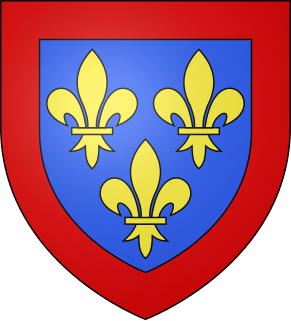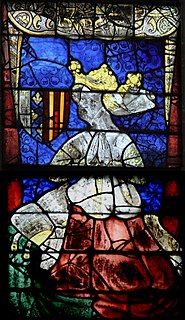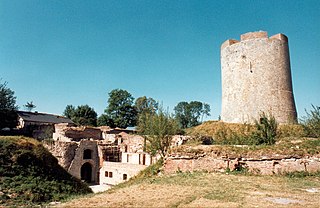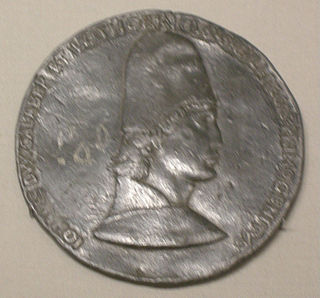This article needs additional citations for verification .(September 2014) (Learn how and when to remove this template message) |


Charles IV, Duke of Anjou, also Charles of Maine, Count of Le Maine and Guise (1446 – 10 December 1481) was the son of the Angevin prince Charles of Le Maine, Count of Maine, who was the youngest son of Louis II of Anjou and Yolande of Aragon, Queen of Four Kingdoms.

The House of Valois-Anjou was a noble French family, deriving from the royal family, the House of Valois. They were monarchs of Naples, as well as various other territories.

Yolande of Aragon was a throne claimant and titular queen regnant of Aragon, titular queen consort of Naples, Duchess of Anjou, Countess of Provence, and regent of Provence during the minority of her son. She was a daughter of John I of Aragon and his wife Yolande of Bar . Yolande played a crucial role in the struggles between France and England, influencing events such as the financing of Joan of Arc's army in 1429 that helped tip the balance in favour of the French. She was also known as Yolanda de Aragón and Violant d'Aragó. Tradition holds that she commissioned the famous Rohan Hours.
Contents
He succeeded his father as Count of Maine, Guise, Mortain and Gien in 1472. He succeeded his uncle René I of Naples in 1480 as forth Duke of Anjou and Count of Provence, according to the will of René who had no surviving son. [1] René's surviving daughter Yolande received Bar and was already Duchess of Lorraine.

Guise is a commune in the Aisne department in Hauts-de-France in northern France.

Mortain is a former commune in the Manche department in Normandy in north-western France. On 1 January 2016, it was merged into the new commune of Mortain-Bocage.
He also used the title of Duke of Calabria, in token of the claims to Naples he inherited from René. [1]
Duke of Calabria was the traditional title of the heir apparent of the Kingdom of Naples after the accession of Robert of Naples. It was also adopted by the heads of certain Houses that had once claimed the Kingdom of Naples in lieu of the royal title.

Naples is the regional capital of Campania and the third-largest municipality in Italy after Rome and Milan. In 2017, around 967,069 people lived within the city's administrative limits while its province-level municipality has a population of 3,115,320 residents. Its continuously built-up metropolitan area is the second or third largest metropolitan area in Italy and one of the most densely populated cities in Europe.
In 1474 he married Joan of Lorraine (1458 – 25 January 1480), daughter of Frederick II of Vaudémont, but they had no children. He died on 10 December 1481.
He willed his inheritance to his cousin Louis XI of France, whose heirs thus obtained a claim to the affairs of Italy, pursued in the next decades.

Louis XI, called "Louis the Prudent", was King of France from 1461 to 1483, the sixth from the House of Valois. He succeeded his father Charles VII.

Italy, officially the Italian Republic, is a country in Southern and Western Europe. Located in the middle of the Mediterranean Sea, Italy shares open land borders with France, Switzerland, Austria, Slovenia and the enclaved microstates San Marino and Vatican City. Italy covers an area of 301,340 km2 (116,350 sq mi) and has a largely temperate seasonal and Mediterranean climate. With around 61 million inhabitants, it is the fourth-most populous EU member state and the most populous country in Southern Europe.












